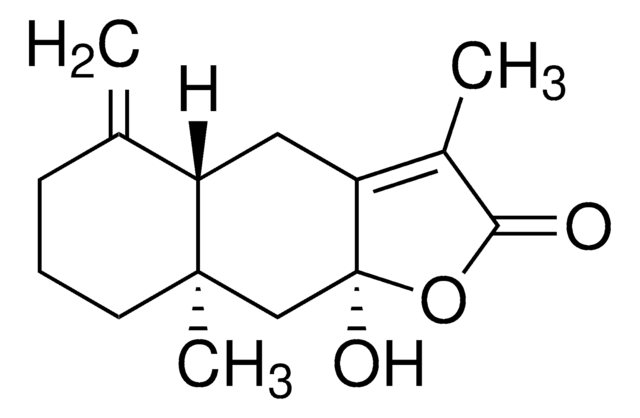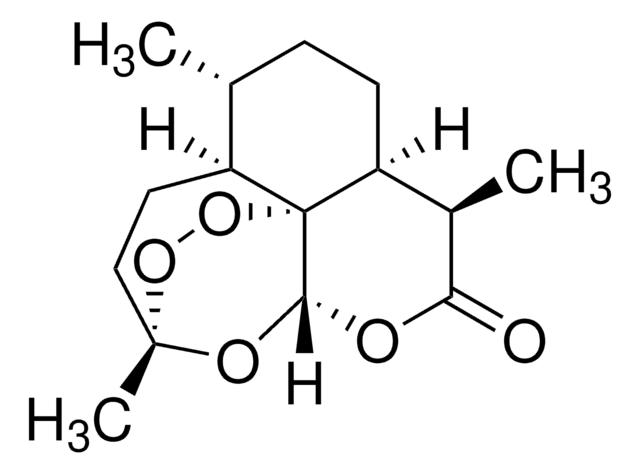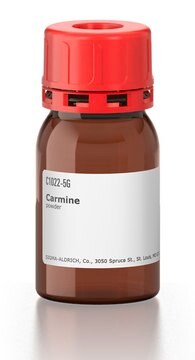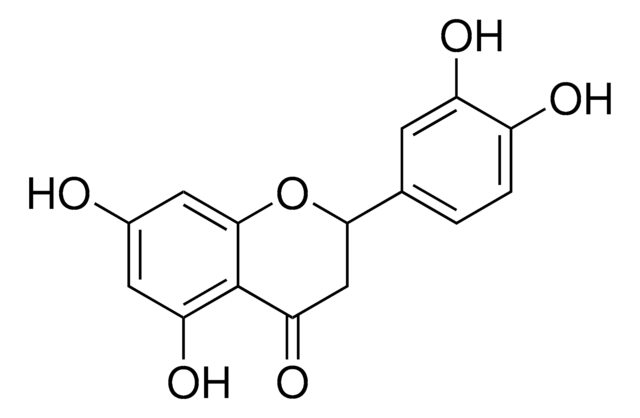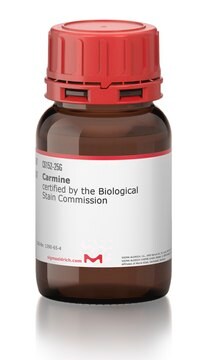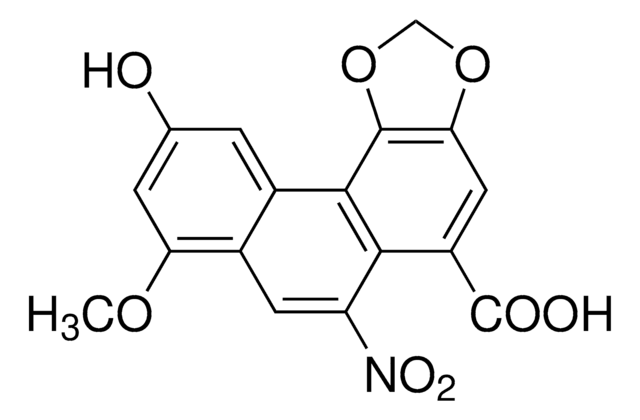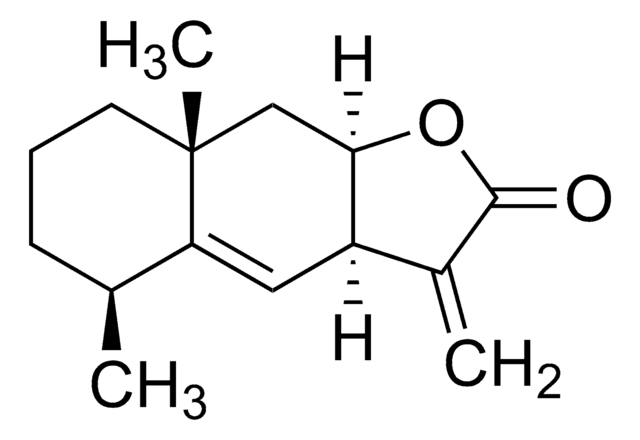Key Documents
About This Item
Polecane produkty
Próba
≥98% (HPLC)
Postać
powder or crystals
rozpuszczalność
methanol: 1 mg/mL, clear, colorless
Zastosowanie
metabolomics
vitamins, nutraceuticals, and natural products
temp. przechowywania
2-8°C
ciąg SMILES
C=C1CCC[C@@](C=C2O3)(C)[C@@]1([H])CC2=C(C)C3=O
InChI
1S/C15H18O2/c1-9-5-4-6-15(3)8-13-11(7-12(9)15)10(2)14(16)17-13/h8,12H,1,4-7H2,2-3H3/t12-,15+/m0/s1
Klucz InChI
ZTVSGQPHMUYCRS-SWLSCSKDSA-N
Szukasz podobnych produktów? Odwiedź Przewodnik dotyczący porównywania produktów
Opis ogólny
Zastosowanie
Działania biochem./fizjol.
Kod klasy składowania
11 - Combustible Solids
Klasa zagrożenia wodnego (WGK)
WGK 3
Temperatura zapłonu (°F)
339.6 °F
Temperatura zapłonu (°C)
170.87 °C
Certyfikaty analizy (CoA)
Poszukaj Certyfikaty analizy (CoA), wpisując numer partii/serii produktów. Numery serii i partii można znaleźć na etykiecie produktu po słowach „seria” lub „partia”.
Masz już ten produkt?
Dokumenty związane z niedawno zakupionymi produktami zostały zamieszczone w Bibliotece dokumentów.
Nasz zespół naukowców ma doświadczenie we wszystkich obszarach badań, w tym w naukach przyrodniczych, materiałoznawstwie, syntezie chemicznej, chromatografii, analityce i wielu innych dziedzinach.
Skontaktuj się z zespołem ds. pomocy technicznej
